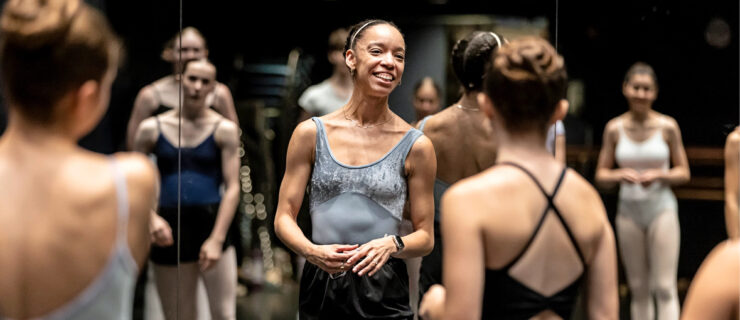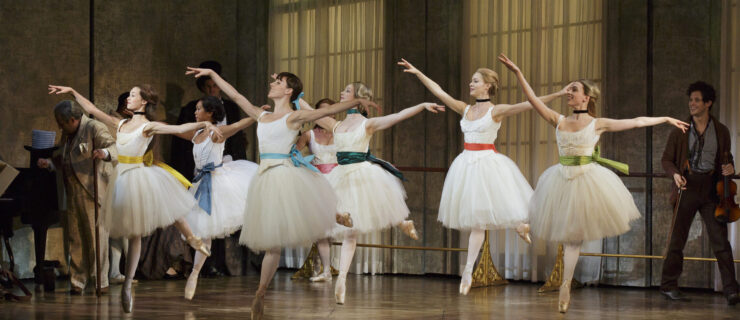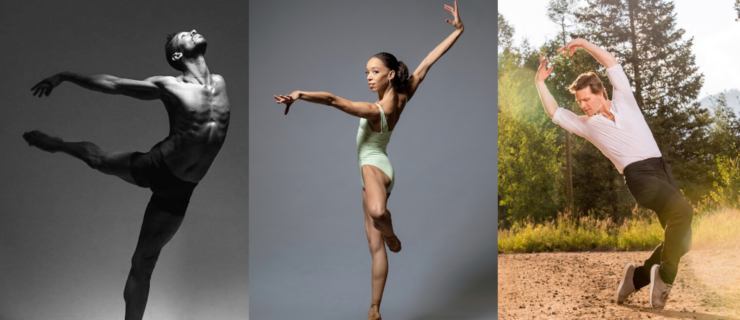Ballerina Shannon Rugani Readies for Her Premiere—in the Orchestra Pit
Shannon Rugani is no stranger to opening night. As a former dancer with San Francisco Ballet for 11 years and a member of the original Broadway cast of An American in Paris, she’s performed in several world premieres.
But when she takes a bow on opening night of Pacific Northwest Ballet’s The Window, by choreographer Danielle Rowe, it won’t be for a leading role. It will be as the composer, her music having been played live by PNB’s orchestra for the company’s Love and Loss program, which runs November 3–12.
“This is my debut for a big symphony,” she says. “I’m going to be so emotional.”
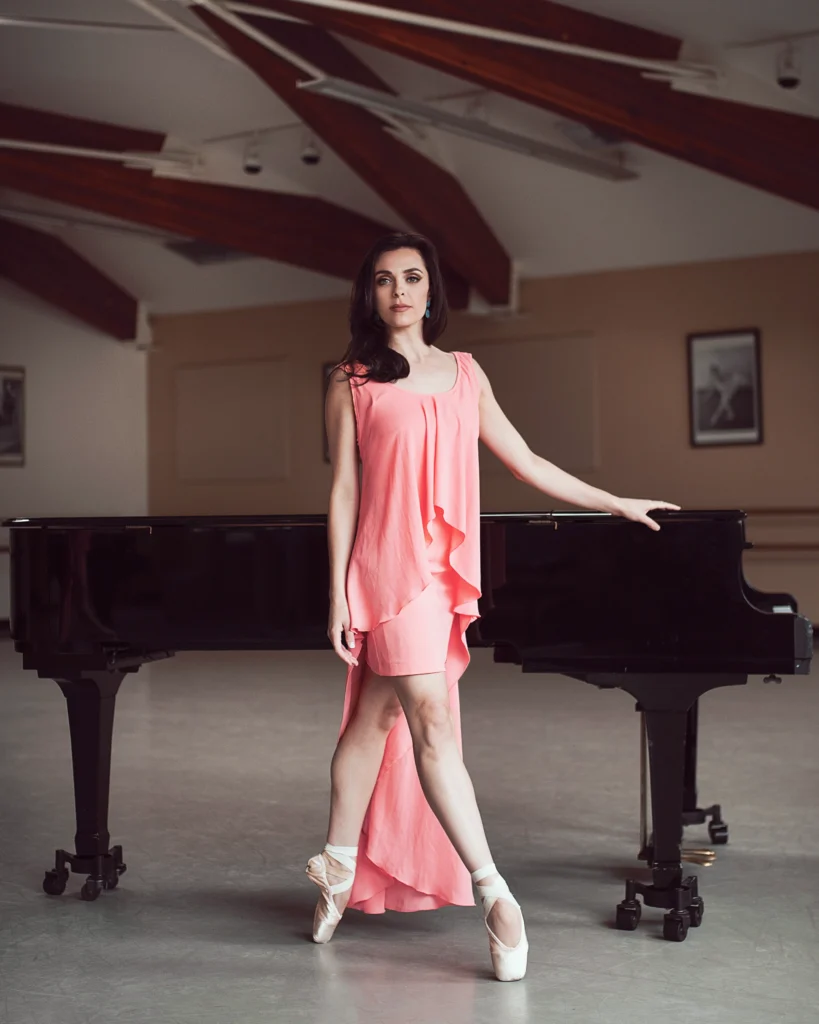
Rugani has always had a penchant for singing, playing piano, and composing, and it was through ballet that she established herself in music. Her performance as Anita in SFB’s West Side Story Suite was a major success, not just for her dancing but for her singing. This propelled her to leave SFB and join An American in Paris, where she also understudied and performed the lead role of Lise Dassin. While in New York City, she performed cabaret performances of her own songs. Rugani decided to focus on music full-time after dancing in Brigadoon at New York City Center in 2017, creating her pop singing persona, EMPRESS. She’s released several songs, many with music videos featuring her dancing.
Her songs have proved danceable—choreographer Alia Kache created a new work using a selection of Rugani’s songs for Madison Ballet’s upcoming Innovation program. But writing a symphony for a ballet was a new challenge for Rugani. She dove in with Rowe, who found Rugani to be just the collaborator she was looking for.
“Shannon’s deep understanding and respect for ballet, what dancers need and want to dance to, has helped our collaboration process tremendously,” says Rowe. “Her openness to feedback and care for the story has made the whole process so joyous.”
Pointe caught up with Rugani to find out how she got involved, how she learned to compose, what to expect from the premiere, and more.
How did this opportunity to work with Danielle Rowe come about?
I went to see a piece of Dani’s in a workshop setting in New York City, and I was just blown away. I knew I wanted to work with her, so I took a chance and sent a snippet of music and said, “If I can ever support your work, I’d love to.” I also loved that she was a woman; women supporting each other has been a through line in my career. To my surprise, she got back to me and said she loved it!
How did you come to compose music?
I started taking piano lessons when I was 4 years old in my hometown of Lake Tahoe. I had the “Mary Poppins” of piano teachers who taught me musical theory and skills for composing. I moved to San Francisco to train at age 14 and then joined [SFB] at 16, so music had to go on hold. But whenever I saw an empty studio, I’d duck in and use the piano to make up songs. It was my way of recharging.
After An American in Paris, I felt more confident in my singing and playing, and realized I could really do something with it. The songs just started coming, and I felt in control as an artist for the first time. As a dancer, you’re the car and someone else is driving. I wanted to rule. That’s where the name EMPRESS came from for my pop persona. The confidence I gained through her made me feel like I could do anything—even write a symphony.
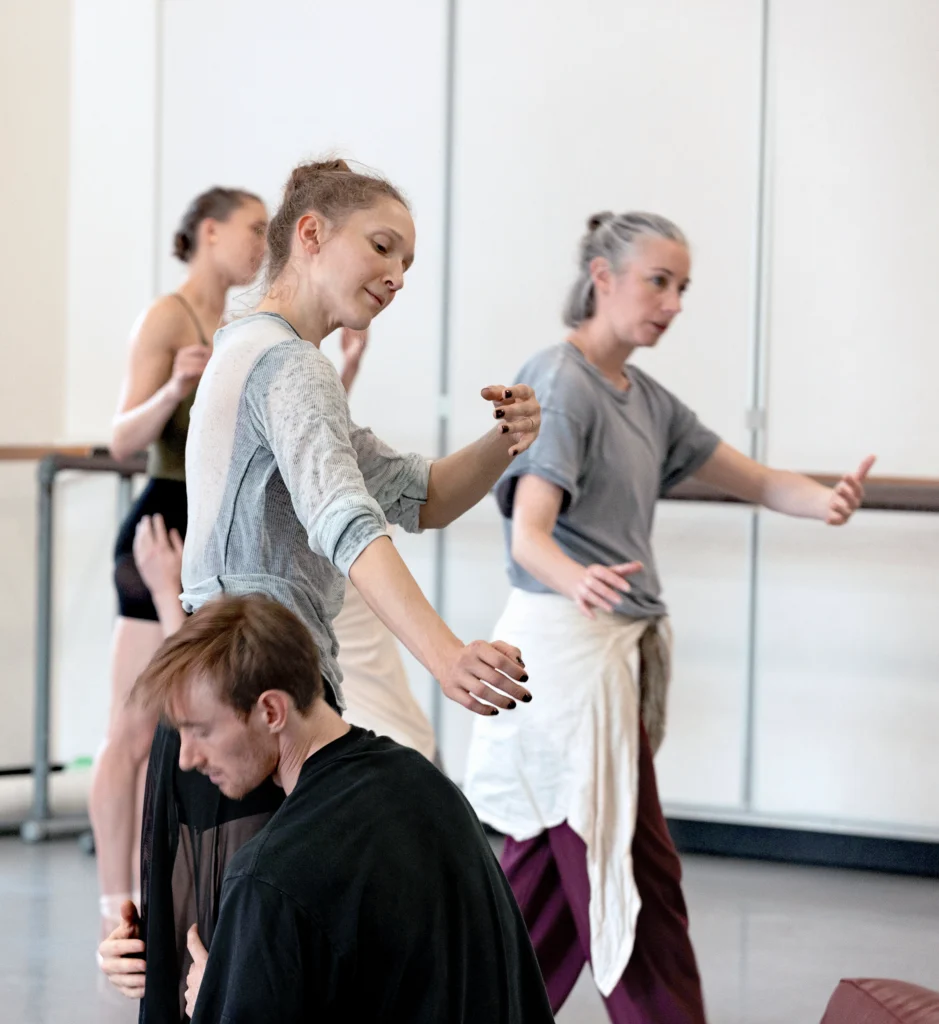
How did you make the leap from piano and pop to symphony?
I was always interested in composing a symphony but got serious during the pandemic. I used the time to learn the tech tools [for music composition], which, I’m not going to lie, is not as fun as creating! I used online resources and tutors to learn digital audio workstation tools for recording, editing, mixing, and producing skills, then a program called Sibelius that translates the music to notation. It took about two years to really get it, and I’m still learning.
What was the process of working with Rowe like?
[Rowe] came up with an idea based on a podcast about a woman who watched her neighbors’ lives through a window during the pandemic. The 20-minute podcast had a flow to it that I could feel. But Dani didn’t give me exact parameters, like how many movements or specific tempos. She’d just say some words that could give a story based on emotions, like “alone.” From there, I composed largely as I imagined the dancers would move.
When I shared the first draft, it was too big and overpowering, like a film score. There wasn’t artistic room for the ballet and costumes. So we worked together in real time to strip it down. I showed her my tech tools and I trusted her, and we turned it into something that was more in her vision.
What are your musical inspirations?
As a dancer, I just loved dancing to beautiful music, like Tchaikovsky. So I’ve mixed in that melodic quality with the beautiful repetitions of my other favorite, Philip Glass. I’m so emotionally connected to music. When I was at SFB, I pitched my music twice, but it didn’t work out. I always dreamed of being the ballerina up there dancing to my own music. So now, I want to give that energy, that beauty, to the PNB dancers.

